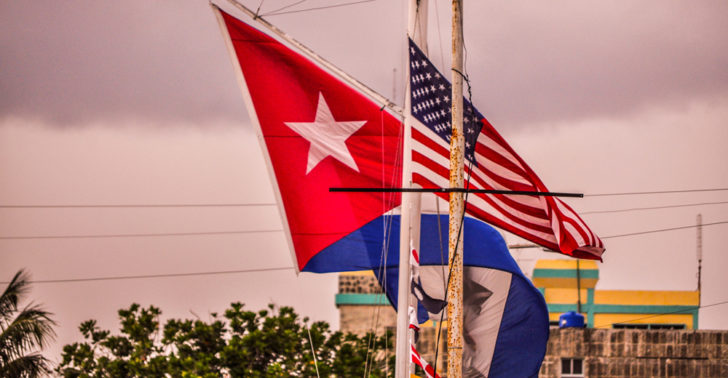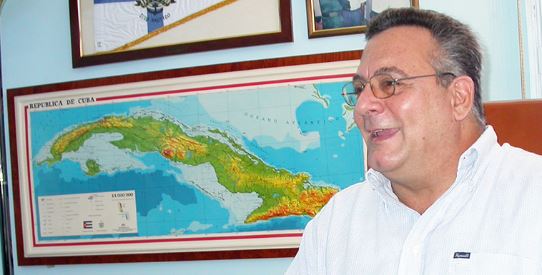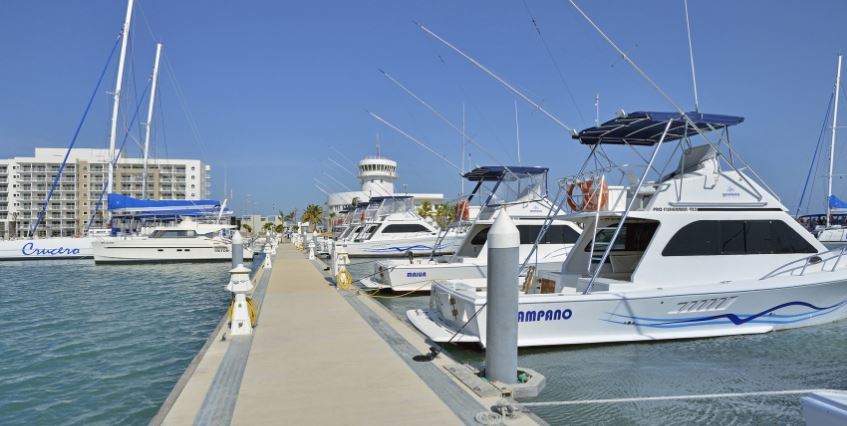
Hemingway Yacht Club: The sea as a bridge
HAVANA — A strip of sea could become a barrier or a tomb. Cuba and Florida know this well. However, that same strait could become a bridge between two peoples whose development has been marked by the nearness of the waves.
That was the bet placed by the Hemingway International Yacht Club (HIYC) 25 years ago. And its perseverance bore fruit.
At that time, nobody could imagine that the HIYC would establish friendly relations with more than 700 clubs worldwide and would have more than 3,000 members in 73 countries. Not even José Miguel Díaz Escrich, the club’s Commodore, who has led that institution from its inception, dared to dream of its success.

“We never intended to become the largest promoter of yachting events in Cuba,” Escrich says. “When we founded the club, on May 21, 1992, we sent a message of friendship based on our love of the sea, the tradition of nautical sports and Cuba’s maritime history. We wanted to contribute to the rescue of this country’s nautical traditions.
“Our goal was simply to establish friendly relations with the international nautical community, from which we were isolated for more than 30 years.”
And they achieved that. The HIYC’s participation has been central in the international rescue of the Ernest Hemingway Marlin Fishing Tournament, which will celebrate its 67th edition this year. Without the boost given by the club and its associates, the tournament would have faded, as happened — practically without any foreign participation — in the three last decades of the 20th Century.
The truth is that the work done in the past several years has made the HIYC the top promoter of nautical events between the United States and Cuba. Just since 2015, after the resumption of diplomatic relations between Washington and Havana, the club has organized 32 events, with the participation of more than 4,500 yachtsmen.
The most recent was the Nautical Parade on the 25th Anniversary of the HIYC, held along the Havana seawall on May 19. It brought together more than 200 boatmen from Cuba, Russia, the United States and Argentina.
Outstanding participants in the regattas organized by the HIYC have been the boats of the Key West Yacht Club, the St. Petersburg Yacht Club, the Pensacola Yacht Club and the Key West Community Sailing Center. In some way, these competitions have become meeting points that serve to bring together two peoples who carry the sea in their genes.
This is well known by George Bellenger, one of the organizers of the Havana Cat Challenge, a regatta that has traveled since 2015 from Key West to Havana. Twenty years ago, Bellenger had tried to negotiate a staging of the event but it wasn’t until 2015 that he managed to turn it into reality.
Last Tuesday May 16, Bellenger and five catamarans arrived in Havana for the third consecutive year. According to organizers, the Havana Cat Challenge is, above all, an event for friends who enjoy sailing, a competition without winners or losers yet with medals for everyone. When he speaks of the regatta and the opportunity to come to Cuba with it, Bellenger likes to refer to “the catamaran diplomacy.”
According to José Miguel Díaz Escrich, in the past 25 years the almost familial relations created between the American yachtsmen and the members of the Cuban club have served “for us to be considered as ambassadors of friendship and love.”
Escrich considers the sea as a two-way bridge. “It separates us at the same time it joins us,” he says. “Our nautical problems are theirs, our concern for the marine species is similar to theirs. Besides, the sea calls for friendship, solidarity and human relations. Recreational yachting is widely used to socialize among families and friends.”
It’s impossible not to agree with that. In fact, the sea has been the main point of consensus, even between the governments of the two countries. In connection with the sea, pacts have been signed on the protection of species, the confrontation against natural disasters, protocols in case of oil spills and the war against drug smuggling and trafficking in humans.

Looking to the future
Florida has one of the world’s largest recreational fleets. More than a million boats line its coastline and are part of the tourist culture of its inhabitants. Although by its location Cuba should be the main destination of those boats, the fact is that it isn’t. At least not for now.
For a long time now, Commodore Escrich has maintained that “Cuba has all the conditions to be the main power of recreational yachting in the Caribbean.” Besides pointing out its singular location, he says that Cuban people are the leading players. According to him, besides the architectural and historical conditions, Cuba’s people are “proud but not arrogant. They’re a friendly people, with a very special idiosyncrasy.”
However, for Cuba to become a power in regional yachting some objective conditions must be met.
At present, the country does not have the infrastructure necessary to take on a wave of nautical tourism from Florida. It’s not just a question of berths for the boats or marina control. The complementary services are determinant: food and fuel supplies, dry docks for inspection and repair. In addition, offers such as sports-fishing tournaments, underwater photography or snorkeling are regular events every year.
Still, the country has placed a bet on this market. Proof of it is the planned construction at the Hicacos peninsula of the Gaviota Marina, a recreational port with 1,000 berths, 200 apartments, a 423-room hotel, shops and a “fishing village” designed exclusively for tourists. It’s quite a “tropical package” designed by Buygues Bâtiment International S.A.
Today, the main operator of nautical tourism in Cuba is the Marinas and Nautical Entrepreneurial Group, S.A., which controls Marina Hemingway, west of Havana.
(Photo at top: More than 30 nautical events between the United States and Cuba have been organized by the Hemingway International Yacht Club since 2015/ Julio Batista.)

